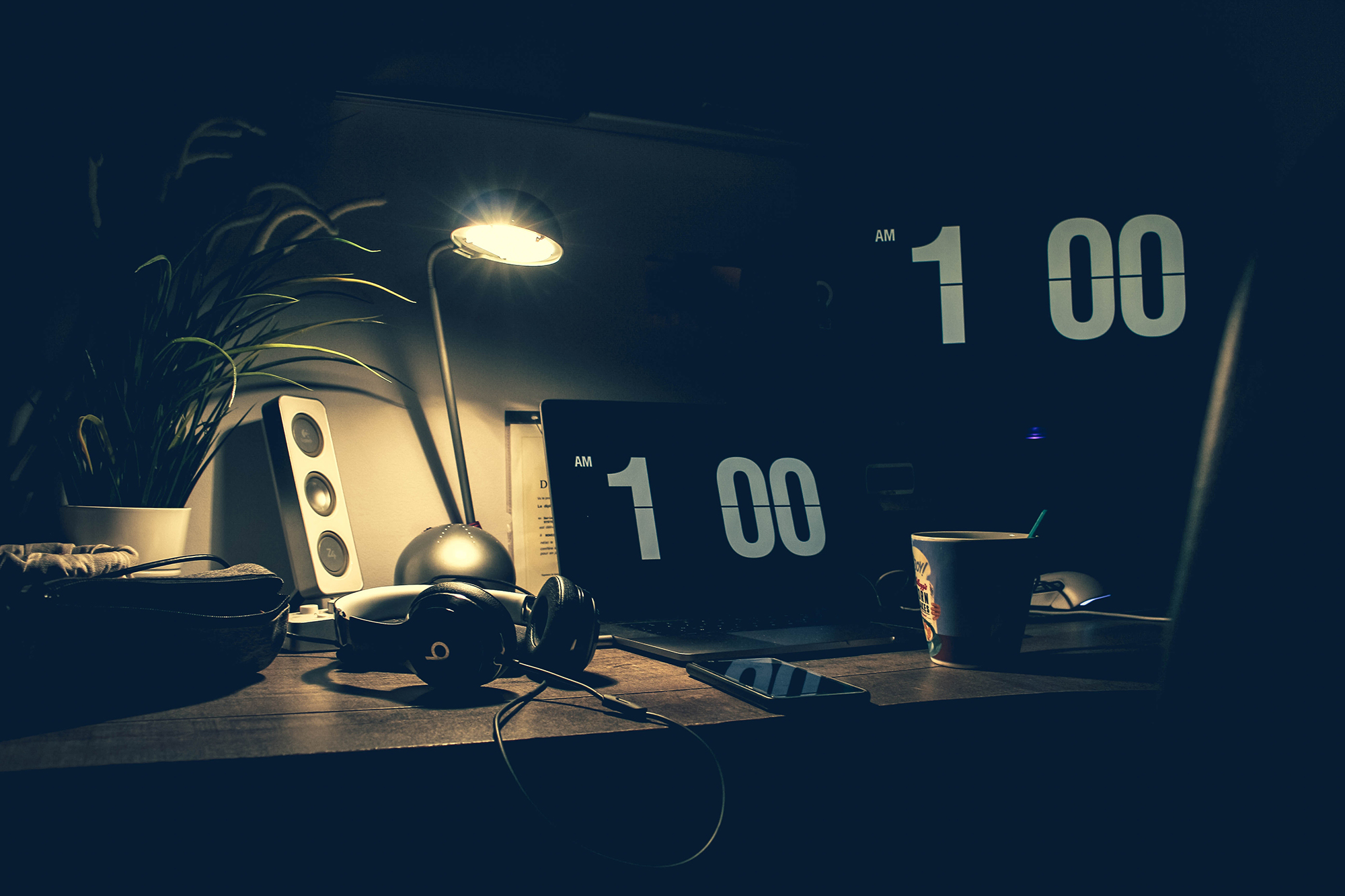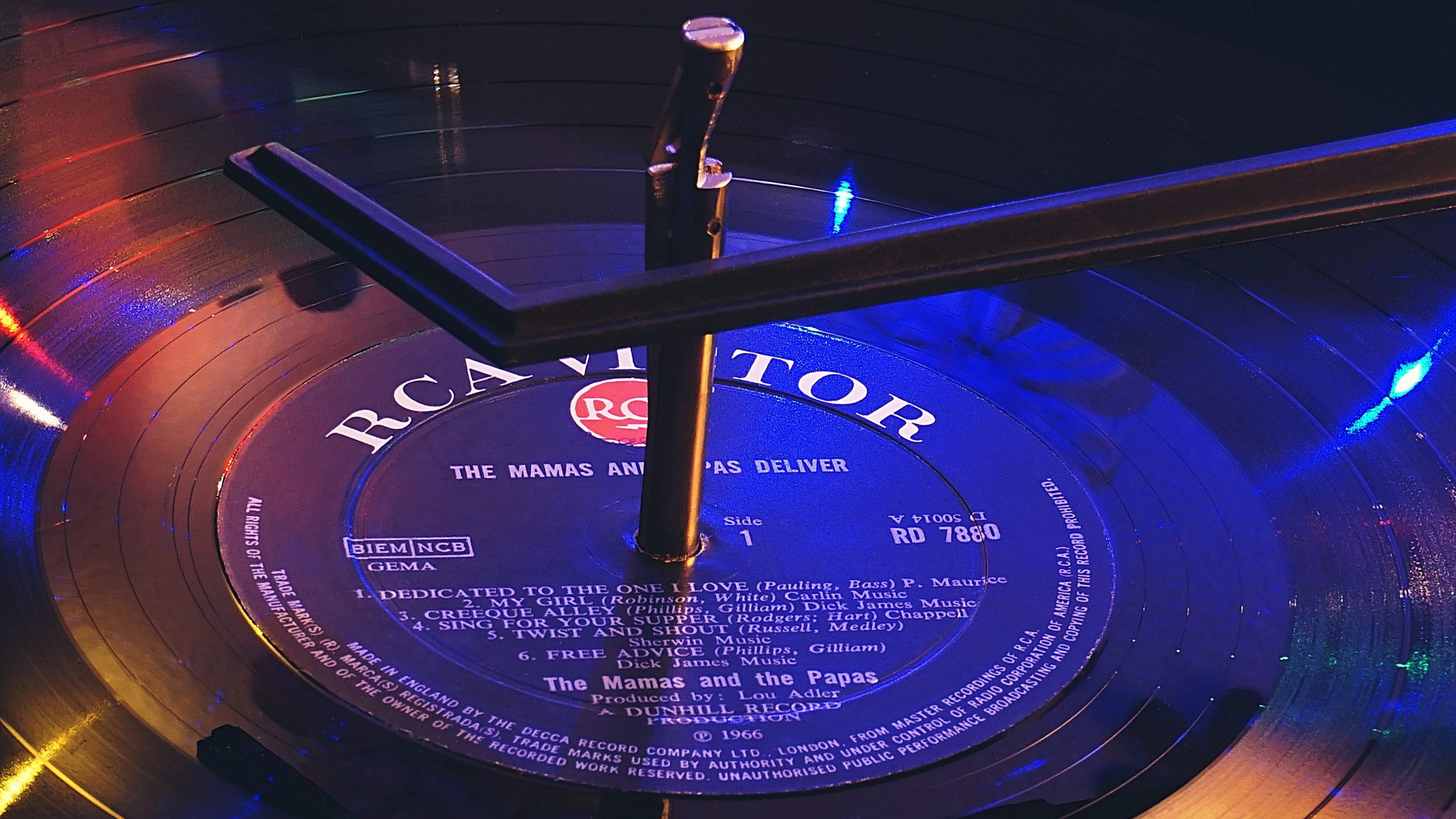All products featured are independently chosen by us. However, SoundGuys may receive a commission on orders placed through its retail links. See our ethics statement.
How to find new music
March 27, 2025
It happens to everyone: you get stuck in a musical rut, and you’re desperate to find something new to capture that feeling you had way back when. Call it nostalgia, call it wistfulness, call it what you will: sometimes we just need to find a new banger or two. We’re here to tell you how to find new music so that you can shake off that routine and lift your spirits with new tunes, no matter where you are in your journey.
Editor’s note: this article was updated on March 27, 2025, to correct formatting.
Old music wasn’t better, you were just younger
If you’ve ever thought to yourself that “modern music sucks! Why can’t it be like it used to be?” there’s a good reason for this. I can assure you, it’s not modern music failing to be “good,” it’s just that newer music isn’t reaching you the way the stuff you liked in your youth does. If you’re over 30 like I am, you probably find yourself fighting your own grey matter in trying to break out of the music you listened to between 12 and 24 years old. That’s because our old brains are very resistant to forming new connections to music, and instead prefer music from our formative years to the exclusion of almost everything else.

In fact, one of our favorite streaming services Deezer was able to perform a study of 5,000 participants to determine the average point where people tend to stop expanding their music horizons. Unfortunately, that age hovered around 27 years and 11 months. While that seems a little bleak, keep in mind that’s an average: a huge number of people will reach “music paralysis” much earlier, and some people never will. But we’re not here to shame people—we want you to find new music that doesn’t sound all the same.
Music composition, construction, and instrumentation has never been more diverse, technically complex, or better recorded than at any point in history. Today’s artists stand on the shoulders of giants. There’s so much music that draws upon so many monsters of melody that it’s frankly impossible that you’ve already heard everything you’ll like. Especially after the MP3 killed physical media, there’s never been a better time to discover, create, and share music with the world.
Do you want to find new music, or are you hooked on a feeling?
So what does this have to do with finding new music? Well, I need to make this very clear from the start: how you respond to music has more to do with your emotional state than it does how kickin’ that beat is. Even if you’ve hit “musical paralysis,” there’s nothing stopping you from rekindling your love of music except your own brain. Ever listen to music you used to love when you’re grieving or overstressed? Didn’t really hit the same way, did it? In a similar vein, you probably hate a lot of the music your exes liked if you had a bad breakup—or love a song that you absolutely nailed at karaoke. The act of finding new songs isn’t really an exercise in finding music: it’s often a search for an emotional payoff. If you want to chase a feeling, you need to be able to have that feeling in the first place.
If you’re looking for new jams, you need to know what you’re feeling right now, and where you want to go when you find the right bop. This is also why you’re far more likely to respond to music that you heard in significant life events, memes, video games, and the movies you’ve really enjoyed. You’re not really listening to the song: you’re jolting your brain into recalling how those things made you feel. This is probably why your workout mix is so different than the rest of your music library. In order to continue, you need identify what feeling you’re chasing, and then pursue it.
How you respond to music has more to do with your emotional state than it does how kickin' that beat is.
Ever wonder why so many of those lo-fi hip hop channels on YouTube have rainy backgrounds or a cartoon character holed up someplace isolated and cozy? The tunes they play are often downbeat, and not meant to pump you up—they’re designed to be uncomplicated trips to a relaxed state that you can pay little attention to. By shotgunning as many sensory cues and on-theme emotional triggers as it can, the streams are pretty effective at pushing you to recall the feeling of being relaxed. While it seems a little weird to praise an idea that’s now many years old, the continued success of “lo-fi beats to relax/study to” channels is largely due to the fact that it makes your emotional state the centerpiece of its design: you decided you want to chill out, searched for the stream by the emotion you wanted to feel, and clicking it fulfilled the journey. That’s the strategy we need to follow to find new tunes.
Time to get weird

This is the fun part!
Clear your head and eliminate as many distractions as possible: it’s time to get cracking. At this point there’s really no wrong answer on how to find new music. Your current goal is to consume as much new media or super-old favorites as you can, all the while enjoying the tunes. Just don’t overthink it, or you’ll distract yourself.
For best results, you need:
- A music streaming service
- Some way to enjoy said service, like headphones, a Bluetooth speaker, or bookshelf speakers (don’t use your smartphone), and get ready to rock out.
Please be mindful of your surroundings and housemates, as the potential bad vibes an altercation would cause defeats the whole point of feel-good music searching.
Be sure to check out our reviews of each streaming service to be able to figure out how to find new music with each. Usually it’s called “radio” (like it is in Google Play Music), but sometimes it’s weirder than that. For example, “For you” in Apple Music, or “Flow” in Deezer. I personally recommend starting a station with a song that really appeals to you at the moment, then continually making new radio stations when you find another song you like in that same auto-generated playlist. Repeat this process a few times until the radio station you create starts to match your mood.
Additionally, you should try these other ideas to shake things up:
- Check out everynoise.com’s tool to scope different genres over Spotify
- Change how you listen, for example, with 3D audio (Tidal, Deezer, Amazon Music HD)
- Watch a bunch of movies you like, and add their soundtracks to your library
- Listen to mashups, and then check out their source material
- Look up the background tracks to your favorite YouTube videos, or let YouTube Music take you on a trip with auto-loading playlists
- Find artists that collaborate with your favorite bands
However, these suggestions can only point you to where to look for that rush of finding new tunes to rock out to. In my personal experience, listening to your friends’ music libraries at a party or social gathering is probably the best way to tickle your brain when listening to unfamiliar tunes. You know, putting yourself in a situation that would allow you to form a fond memory or connection to the cues that would evoke an emotional response later in life. Just be sure to install Shazam on your smartphone if you’re going to search for music in the wild so you can figure out what’s playing without asking someone.

Of course, these ideas aren’t sufficient to find everything—nor are they applicable to everyone. This wouldn’t be a SoundGuys article if we didn’t add in a few off-the-wall ideas for you to try, so here are our pro tips for finding new music:
Avoid mega-hits and the radio, use a streaming service or Bandcamp
Despite Freddie Mercury’s assertion that radio is yet to have its finest hour, that lyric was penned long before the corporate world decided to eat radio whole and reduce hitmaking to a cold science. It’s not just you who thinks all mass-marketed music sounds the same: so do the people who make it.
Even though this is done to try to hook as many people as possible, diversity is the spice of life: who the heck wants to listen to the same stuff every day? I don’t. While there’s a time and a place for corporate labels, the really interesting stuff doesn’t get airtime over FM. Try to branch out into as much unfamiliar territory as you can when browsing your favorite streaming services, and make use of the radio features to find similar content to the things you like, because it probably will never cross your radar otherwise. Additionally, seek out some of your favorite artists on YouTube and check the related content for fresh suggestions. Some of the best music in the last 20 years has been toiling away in a sort of purgatory on common sharing platforms, just waiting to be found.
Bandcamp is another great resource for discovering less popular artists. It’s also an excellent tool for supporting musicians, and contrasts streaming services that don’t pay musicians very well.
Look up who produced your favorite music, and find their other work

Fire up Google and look up your favorite songs and bands. Be sure to copy who the producer of your favorite jams was, and then search for other tracks and bands that used that same producer for their work. Ever wonder why your favorite groups can produce so many duds after a few albums? They may have changed producers. Take a look at what their old producer is doing nowadays and you may just find new music you like.
What you might not know is that the producer behind the band is going to be the person who’s arranging the pieces, helping craft the band’s sound, and overall quality. How someone produces tracks is going to show up again and again in their other work, so if you find a producer that you like: run with it. It may turn out that you may not be a Michael Jackson fan, but you’re actually into Quincy Jones behind the mixing board instead.
This is super easy to do if you’re a subscriber to Tidal. On the home page of the player, all you have to do is scroll down to “Producers & Songwriters” and browse playlists of tracks created by the producers and songwriters that published your favorite jams. It’s a bit tough to get used to, but it’s an excellent tool to broaden your musical horizons.
It may turn out that you may not be a Michael Jackson fan, but you're actually into Quincy Jones behind the mixing board instead.
Similarly, if you check out the other artists performing under the same label as your favorite bands, you may find that there’s an amount of similarity there. As bigger recording labels tend to have the same producers work on a lot of content in-house, it’s no surprise that a lot of the practices they transfer from band to band can create a “house sound.” If you identify a label you really like, it’s easy-mode to find new music.
How to find new music on Spotify
There are three main methods to find new music on Spotify. The first place to go is the Discover Weekly playlist. This is an algorithmic playlist that Spotify updates every Monday to provide you with songs you’ll likely enjoy. In general, we find that the Discover Weekly playlist shows music in a similar style to artists that you like, but you’ve never listened to before. This helps identify small and upcoming artists that create music in your preferred genres and styles.
The second playlist to check out each week is Release Radar. Spotify updates this playlist every Friday with the latest music from artists that you follow. This playlist won’t help you find new artists, but it will ensure you never miss a new track from your favorite artists. Just make sure to click follow on all your favorite artists to ensure their tracks appear in Release Radar.
Finally, to find new music on Spotify, check out the Search tab. Spotify will frequently recommend you new genres and playlists within this tab on the app. Click into a genre you love or one you want to try out, and you’ll find tons of algorithmic and user-generated playlists for every mood and occasion.
Don’t be afraid to give genres of music you hate a try
This sounds counter-intuitive, but sometimes finding new stuff means giving something you thought you hated a try. For example: I’m not a country music guy. No matter how many times I try, I just can’t get into modern country music, and I tune out pretty quickly to media that relies on it.
But if I really think about it, my distaste for modern country largely stems from the fact that I never listened to it during my formative years, ensuring that I don’t have an emotional connection to any of the themes or features that make up a typical modern country song. Older stuff like Kenny Rogers, Willie Nelson, and Dolly Parton that I listened to on the radio? Absolutely, that’s in my library. But the newer popular stuff just takes me back to my soul-sucking beer truck driving job and having the broken radio stuck on one FM channel. I can’t forge a positive connection with that narrow range of music, because overexposure to the same twelve songs every day for a year just soured me on an entire vocal style.
But people like me are exactly the reason why collaborations like Lil Nas X’s Old Town Road venture with Billy Ray Cyrus was important in 2019. Not only was it a smash hit on the charts, but it offered fans of both the rap and country genres a taste of each style to a new audience—all the while blending elements from each genre’s inventory. Country fans who had no interest in rap now have a song that eases them into more of it with elements they recognize and enjoy, and vice versa. Of course, that wasn’t the first country/rap crossover, and it won’t be the last. For example, Beck’s Hotwax comes to mind. But the success of these crossovers highlights that because there’s so much to explore nowadays, you’re probably missing out on something really killer if you avoid a genre entirely.
True to my point, I was able to find new music that I like by branching out through subgenres of folk and country using the suggestions detailed above. Turns out, folk-punk is a thing, and it slaps. Go figure! You may find that the problem isn’t that you dislike an entire genre, it’s that you just haven’t been exposed to bands, sub-genres and collaborations that might have more in common with your brain’s predilections. Definitely take a gander through Every Noise at Once’s tool listed above to explore different takes on your least-liked categories of music.
Almost everything from the past can be found on the internet

Of course, I’d be remiss if I didn’t point out that just because you’re trying to find new music doesn’t mean that you might be looking for something that’s very old. The best thing about the internet’s vast music library is that you can find damn near anything ever recorded somewhere on the internet. If you’re looking for a particular song or artist, they’re there. Just look around!
Additionally, you can also plumb the depths of an artist’s entire discography, and discover songs you never knew about. I find this extremely rewarding, having started my musical journey in the days of records and CDs.
Music doesn’t have to be “good” to be enjoyable
You should also consider that music, like any other form of entertainment, is just that: entertainment. If you’re worried about what your friends might think: let it go. The only thing that matters is how the music makes you feel, that’s it.
It is perfectly fine to embarrass everyone around you by singing Shake it Off if you want to, or to fire up the old pop jams of the ’90s and ’00s. Sometimes listening to an awful song can be enjoyable because of how much it stinks. Like I said earlier, the right song is usually more about the emotional payoff than it is about the music itself. So don’t overthink it, have fun!
If you’ve found other ways to find new music, be sure to reach out to us on Twitter to share your finds, sometimes a recommendation from a friend is all you need to break your musical rut.
Frequently asked questions about finding new music
Yes, in fact, you can go ahead and build your own local digital music library. If you use an internet-connected network-attached storage (NAS) device, you can even access your music library from anywhere in the world. For those looking to learn more, read our guide here.
Thank you for being part of our community. Read our Comment Policy before posting.